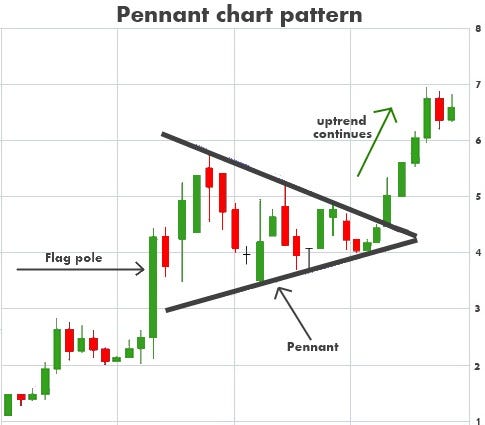20 Great Ways For Deciding On AI Stock Predicting Websites
20 Great Ways For Deciding On AI Stock Predicting Websites
Blog Article
Top 10 Tips For Assessing The User Interface And Experience Of Ai Stock Predicting/Analyzing Trading Platforms
User Interfaces as well as user experiences are crucial to the effectiveness of an AI stock-predicting/analyzing trading platform. Poorly designed interfaces can make it difficult to make decisions, even if the underlying AI models are robust. Here are the top 10 tips for evaluating the UX/UI of these platforms:
1. The ease of use and the intuitiveness of the product are assessed
Navigation: Make it easy to navigate through the platform, with menus, workflows and buttons.
Learning curve: Assess the speed at which a novice user can comprehend and utilize the platform, without requiring any extensive training.
Consistency: Search for consistent patterns of design (e.g. buttons colors, buttons etc.) throughout the whole platform.
2. Make sure you check for customizability.
Dashboard customization: Verify if users can personalize dashboards to display relevant data, charts, and metrics.
Layout flexibility: The platform must permit users to rearrange, resize or move widgets.
Themes and preferences: Check whether the platform provides dark and light options or other preferences for visuals.
3. Visualize information using the Assess Tool
Quality of the chart: Make sure whether the platform offers interactive charts that can be zoomed and have panning functions (e.g. line charts, candlestick charts).
Visual clarity: Ensure the information is clearly presented with labels, legends and tooltips.
Real-time updates: Verify that the visualizations are updated in real time to reflect any changes in the market.
4. Test the responsiveness and speed.
Even when working with massive databases and complex calculations the platform should load quickly.
Performance in real-time: Verify that the platform can handle data feeds in real-time without lag or delay.
Cross-device Compatibility: Verify whether the software works flawlessly with various gadgets (desktops or mobiles).
5. Accessibility must be assessed
Mobile application: Find out whether there's a complete mobile app for trading on the go.
Keyboard Shortcuts: Make sure your platform allows keyboard shortcuts.
Accessibility features - Check that the platform is compliant with accessibility standards.
6. Test Search and Filter functionality
Search efficiency: The platform should allow users to quickly search indexes, stocks and other assets.
Advanced filters: Check if you can narrow down your results by applying filters (e.g. sector, market capital, performance metrics).
Saved search: Check if the platform permits users to save searches frequently used and filters.
7. Look for Alerts and Notifications
Customizable notifications: Allow users to create notifications that are tailored to specific conditions.
Delivery of notifications: Check whether notifications can be sent through different channels (e.g. SMS, email, app notifications).
Examine the speed and accuracy of alarms.
8. Examine the possibility of integration with other tools
Broker integration: Ensure that the platform is integrated seamlessly to your broker account to facilitate trade execution.
API access Make sure to check if APIs are available for advanced users looking to develop customized workflows or tools.
Third-party integrations: Determine whether the platform allows integrations with other software (e.g., Excel, Google Sheets, trading bots).
9. Assessment Help and Support Features
Onboarding Tutorials: Check whether your platform has tutorials or guides to new users.
Help Center: Make sure that the platform has a complete and well-organized help centre.
Customer support: Check whether the platform provides responsive customer support (e.g. email, live chat, phone).
10. Test Overall User satisfaction
User feedback: Reviews and testimonials are used to determine the general satisfaction of the users with the platform's UI/UX.
Free trial period: Use the platform for free and evaluate its usability.
Examine error handling.
Bonus Tips
Aesthetics: While functionality is key aesthetics are important, a pleasing design can greatly enhance the overall user experience.
Performance under pressure: Test your platform in highly volatile markets to ensure it's responsive and stable.
Look for forums that are active and communities. Users can share their tips and feedback in these areas.
Follow these tips and you can evaluate the UI/UX of AI-powered stock prediction/analysis trading platforms. They'll be easy to use, efficient, and will also meet with your trading requirements. A well-designed UI/UX is an effective tool that will aid you in making better decisions and trades. Follow the top rated stock predictor blog for website tips including trading ai, ai stock trader, best ai trading platform, stock analysis websites, best ai copyright trading bot, chart ai for trading, ai copyright signals, incite, best ai copyright trading bot, ai stocks to invest in and more.
Top 10 Tips For Evaluating The Latency And Speed Of Ai Trading Platforms
Speed and latency are crucial factors when considering AI stock predicting/analyzing trading platforms, especially for active traders, algorithmic traders and high-frequency traders. Millisecond delay can have an effect on the profit of a trade. Here are ten of the most effective methods to determine the speed and the latency of platforms.
1. Data feeds that are real-time: How to evaluate them
Speed of data delivery: Make sure your platform provides real-time data (e.g. sub-millisecond delay).
Find out the distance of the source to the most important exchanges.
Data compression: Make sure that the platform is using efficient data compression in order to speed up data delivery.
2. Test Trade Execution Speed
The time it takes to process your order is the speed of your order that will be processed and completed by the platform.
Direct market access: Make sure that the platform allows direct orders to be sent to the exchange.
Execution Reports: Verify if your platform provides detailed reports on the execution of orders, with timestamps.
3. Assess Platform Responsiveness
User interface (UI) speed: See how fast the UI on your platform responds to your inputs (e.g. pressing buttons or loading charts).
Updates to charts: Check to see if the charts and visualizations are updated in real-time without delay.
Mobile app performance. If you are using an app for mobile, you should ensure it is performing as quickly and efficiently as the desktop version.
4. Check for low-latency infrastructure
Server location: Make sure the platform is using low-latency servers that are close to exchanges and financial hubs.
Co-location Services: Find out whether the platform permits co-location. This allows you to store your trading algorithms in servers close to the Exchange.
High-speed networks: Verify that the platform utilizes fiber-optic high-speed network or other low-latency methods.
5. Evaluate Backtesting and Simulation Speed
Historical data processing: See how fast your platform processes and processes historical data.
Simulation latency: Make sure that the platform can simulate trading in real-time without obvious delays.
Parallel processing: Determine if the platform uses the concept of distributed computing or parallel processing to speed up complicated calculations.
6. Check the API Latency
API response time: This is the speed at the rate at which an API platform responds to requests.
Rate limits. Examine if there are reasonable limits for the API. This will help prevent delays in high-frequency transactions.
WebSockets support: Ensure that your platform is using WebSockets protocols for low-latency real-time streaming of data.
7. Test the stability of your platform using Load
Simulation of scenarios involving high volume trading to test whether the platform is reliable and stable.
Market volatility: Test the platform at times of high volatility in order to see if it can manage rapid price shifts.
Test your strategy for stress Test your strategy: Find out if the platform allows you to test your strategy in extreme conditions.
8. Evaluate Network and Connectivity
Internet speed requirements: To ensure optimal performance, make sure that your internet speed is in line with the recommended speed for your platform.
Reliable connections: Make sure that the platform supports redundant internet connections to prevent the possibility of downtime.
VPN latency. Check if you're using VPN. Verify if you are using a VPN in the event that this causes latency.
9. Look for Speed Optimisation Features
Pre-trade analytics: Make sure that the platform offers pre-trade analytics to improve the speed of execution and order routing.
Smart order routing (SOR) is also referred to as smart order routing, is a method of determining the most efficient and efficient execution locations.
Monitoring of latency: Ensure that the platform allows you to monitor and analyze your latency live.
Review User Feedback Benchmarks
User reviews: Check for user feedback on the site to gauge the speed and latency of the platform.
Third-party benchmarks: Seek out independently-run benchmarks or reviews comparing the speed of the platform to other platforms.
Case studies: Check whether the platform has cases studies or testimonials that demonstrate the low-latency capabilities.
Bonus Tips
Trial period: Test out an unpaid test or demo of the platform to see the performance of the platform in real scenarios.
Customer support - Check if there is support available to address issues related to latency, optimization or other issues.
Hardware needs. Find out the platform needs specialized hardware (e.g. the latest high-performance computer) in order to run at optimal speed.
With these suggestions you can accurately assess the speed, latency and the accuracy of AI stock prediction/analyzing trading systems. This will enable you to select a system according to your specific needs in trading as well as reducing any delays. A low latency, particularly for high-frequency and algorithmic trading, is crucial. Even small delays have the potential to greatly impact profit. Read the most popular ai stock prediction examples for site recommendations including best ai stocks to invest in, best free copyright trading bot, stock predictor, ai bot for copyright trading, ai trading bots, chart ai trading, ai investing tools, ai copyright trading, ai trade, ai for investing and more.